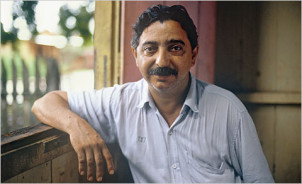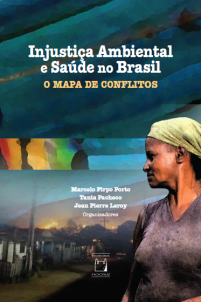
By Joan Martinez Alier
December 22nd, 2013 marks the 25th anniversary of the assassination of Chico Mendes (1944-1988) who defended the Amazon against deforestation in Acre, Brazil. Chico Mendes was a rubber gatherer (seringueiro) and a trade unionist who defended rubber gatherers against cattle ranchers who burned the forest. He learned to read as a boy with an old communist, hiding at the Brazil and Bolivia border and a survivor from the Prestes column. Far from diminishing, conflicts over deforestation and expansion of the agricultural frontier continue to grow throughout the Amazon. Deaths constantly occur because of this expansion. But there are also many other conflicts over environmental injustices, such as mining expansion, oil and gas extraction, infrastructure (roads, mega-dams), pesticide pollution, etc.
Ten years ago, the Network for Environmental Justice formed in Brazil. The activists were visited by Robert Bullard, who struggled for decades in the United States against “environmental racism”, i.e. fighting pollution in neighborhoods where people of color and poor people live. This gave impetus to the Brazilian Network for Environmental Justice. To provide more visibility to cases of injustice and open conflict, there were several attempts at the state level (Rio de Janeiro, Minas Gerais, etc.) to inventory and map such conflicts.
 This has culminated in the online publication of an inventory and general map of Brazil and a book compiled by Marcelo Firpo Porto, Tania Pacheco, and Jean Pierre Leroy titled “Environmental Injustice and health in Brasil. The map of conflicts”, in November 2013. It is a groundbreaking piece of work in the world, with 400 inventoried cases—each with a three or four page description of their main characteristics (e.g. is it a conflict over mining, nuclear waste, asbestos or land theft? Who are the major players? What are the outcomes?).
This has culminated in the online publication of an inventory and general map of Brazil and a book compiled by Marcelo Firpo Porto, Tania Pacheco, and Jean Pierre Leroy titled “Environmental Injustice and health in Brasil. The map of conflicts”, in November 2013. It is a groundbreaking piece of work in the world, with 400 inventoried cases—each with a three or four page description of their main characteristics (e.g. is it a conflict over mining, nuclear waste, asbestos or land theft? Who are the major players? What are the outcomes?).
In Colombia, there is already a similar map (as we do with the EJOLT project), but it only documents 70 cases. There are several initiatives in Mexico and Turkey of the same persuasion. The topic is growing both in practice and in university research. The General Sarmiento National University in Buenos Aires announced that it is preparing the first Latin American Congress of Environmental Conflicts in October 2014. The Congress does not aim at solving the conflicts but will study them, disseminate them, and give them a sense of history. Environmental justice struggles contribute enormously to the slow march toward an environmentally sustainable society.
What then is the purpose of these inventories and maps, beyond the advancement of political ecology? It’s about showing the structural causes of so many conflicts, many of which are born out of an increased metabolism of the global economy and the growing export of raw materials. They are not at all NIMBY cases (“not in my backyard”); on the contrary, they are local examples and manifestations of the global movement for environmental justice. For example, in Brazil there has been a movement called Justice in Rails (justiçanostrilhos) in protest against accidents on railways that transport raw materials to export ports. There are similar protests in other places in the world. In Brazil, there is a Movement of People Affected by Dams (movimento de atingidosporbarragens), and comparable groups exists in Mexico and elsewhere.
The purpose of the inventories and maps (as with EJOLT) is to give visibility to the affected populations, to put their demands on the table, and explain and support their strategies of resistance and the alternatives they put forward.
In many conflicts, there are scientific uncertainties. (I.e. How harmful is it to use cyanide in open pits of gold-mining? How does glyphosate used in GM soy crop production affect human health?) Therefore, one of the best ways to gather information is to discuss with local people who know what is going on better than official health authorities that often live at a distance from the issues. The knowledge collected in cases of conflict can serve other cases.
The goal is not simply to give a list of environmental impacts or risks affecting different local groups like peasants, indigenous people, or Afro-Brazilians. Beyond that, these people can share their voices (oral stories, frequently with videos). They have a right to speak, and to survive. Voices are silenced by the companies, the state, the media—their voices calling for social and environmental justice must be heard.
Inventories and maps of environmental injustices are instruments of struggle against injustice and racism, the give visibility to populations whose lives are threatened. The map, Brazilian researchers say, is not only a platform or a loudspeaker, it is also somewhat like a shield, to the extent that is possible in a world of violence against the poor.

The project ENVJUSTICE has received funding from the European Research Council (ERC) under the European Union’s Horizon 2020 research and innovation programme (grant agreement No. 695446)